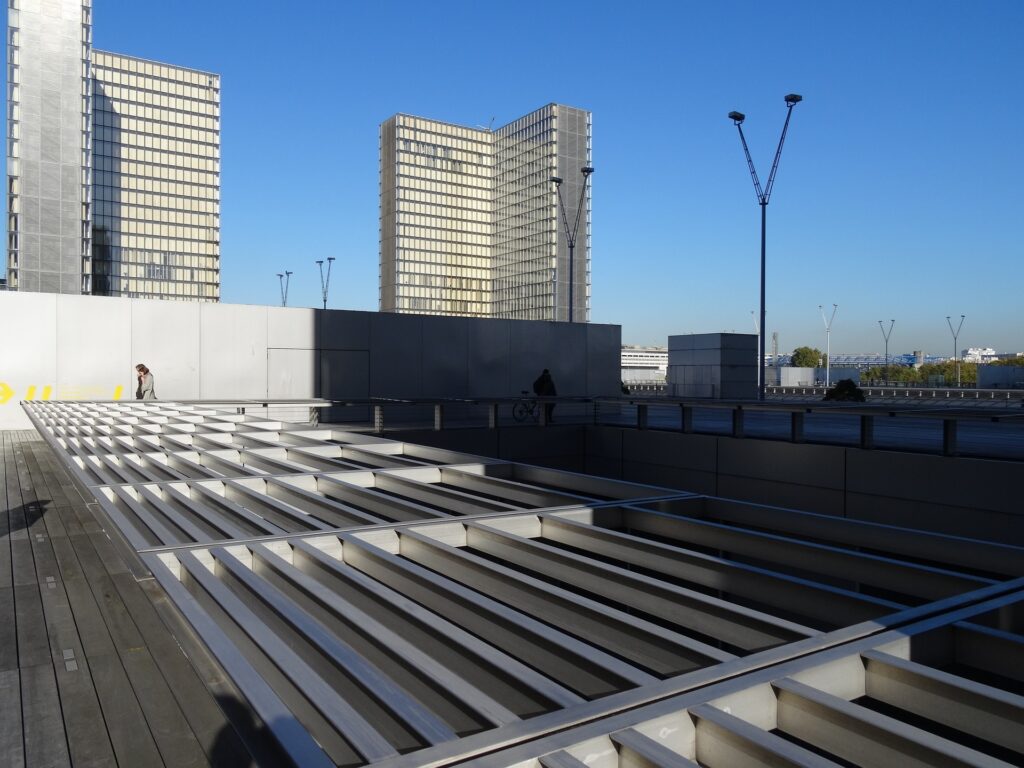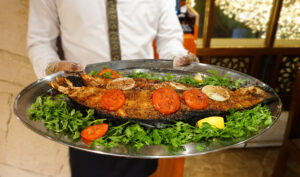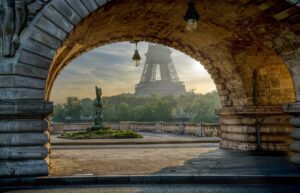Our tour of the arrondissements is heading back across the Seine this week to take a look at the 13e arrondissement, known as Gobelins. This district can best be summed up by the word eclectic, and I mean that in the best possible way, because the 13e is home to an incredibly diverse range of sights. Tiny villages with their own unique style. National landmarks. Former royal factories. They can all be found in the southeast of Paris. So let’s dive in!
A Royal Hub of Tapestries
The 13e is named after the Gobelin family, who settled in what is now the 13e arrondissement during the 15th century. They were dyers by trade, and they built their home and factories along the Bièvre River that flows from the Yvelines department to the Seine. Today, the Bièvre is almost completely covered within Paris. But in the 15th century, it was open, accessible, and mostly industrialized. Tanneries were a common sight along its banks, as were dye-makers, and the Gobelin family were one of these merchants. They were also the most successful, becoming incredibly wealthy and powerful in just a couple of generations.
In the 16th century, the Gobelin family expanded into tapestry making, and their tapestries became renowned throughout France. In 1662, King Louis XIV purchased the Gobelins factory and turned it into the “Crown’s Royal Factory of furniture and tapestries”. Gobelins remained the official royal tapestry maker until the factory was closed during the French Revolution. Work resumed during the restoration of the French monarchy, and today the Gobelins factory is a state run institution. It still produces tapestries, and more importantly (in my opinion), it is open throughout the week for guided tours of this historic site. It’s an incredible, off-the-beaten-track museum that you don’t want to miss.
Books, Books, and More Books
The current location of the National Library of France can be found in a building complex that is a very new addition to the city. However, the library itself dates back to the 14th century and the royal library that was first established at the Louvre by Charles V. This institution changed locations and ownership many times over the centuries, becoming the largest library in the world by the 20th century. Today, it is also one of the oldest libraries in the world.
In 1988, President François Mitterrand announced the construction of a new home for the National Library. It was inaugurated in 1996 after enormous budget overruns, and not without controversy. The design features four glass towers that are meant to represent open books; a look that was not appreciated by Parisians at the time of its opening. Today, the library contains over 15 million books, manuscripts, and documents, and it hosts exhibitions and cultural events throughout the year. It is a true book-lovers paradise, which means it’s my personal slice of heaven in Paris.
Little Asia
The 13e is famously home to many distinctly unique areas and villages, including Petite Alsace, Cité Florale, Butte aux Cailles, and Maison Blanche. All of which are worth a visit. But the most famous neighbourhood is the Asian Quarter in the southeast of the district, often called Little Asia. This neighbourhood was originally home to refugees of the Vietnam war starting in the 1970s. However, since then, the area has also become home to many immigrants from China, Laos, and Cambodia. Today, this neighbourhood is the largest Chinatown district in Europe, and it is home to incredible restaurants, shops, and supermarkets from all over Asia. It is also home to a spectacular New Year’s celebration every winter. Definitely a must-see!
Hidden Gems
Piscine Josephine Baker – A beautiful pool right on the Seine River that is open year round.
6 Villa des Gobelins – Residence of Hồ Chí Minh, the Vietnamese revolutionary and politician, between 1919 and 1921.
Passerelle Simone de Beauvoir – A beautifully (and uniquely) designed pedestrian bridge that connects the National Library with Bercy Park.
La Felicita – The craziest artisan hipster food market/bar you never knew you needed. Get there early, otherwise prepare to wait in line.
Want to read more about the arrondissements of Paris? Click HERE.
Laura Moore is a professional storyteller who loves history and the many stories that make Paris one of the most fascinating cities in the world. Join one of her signature tours to learn the story of a city.




